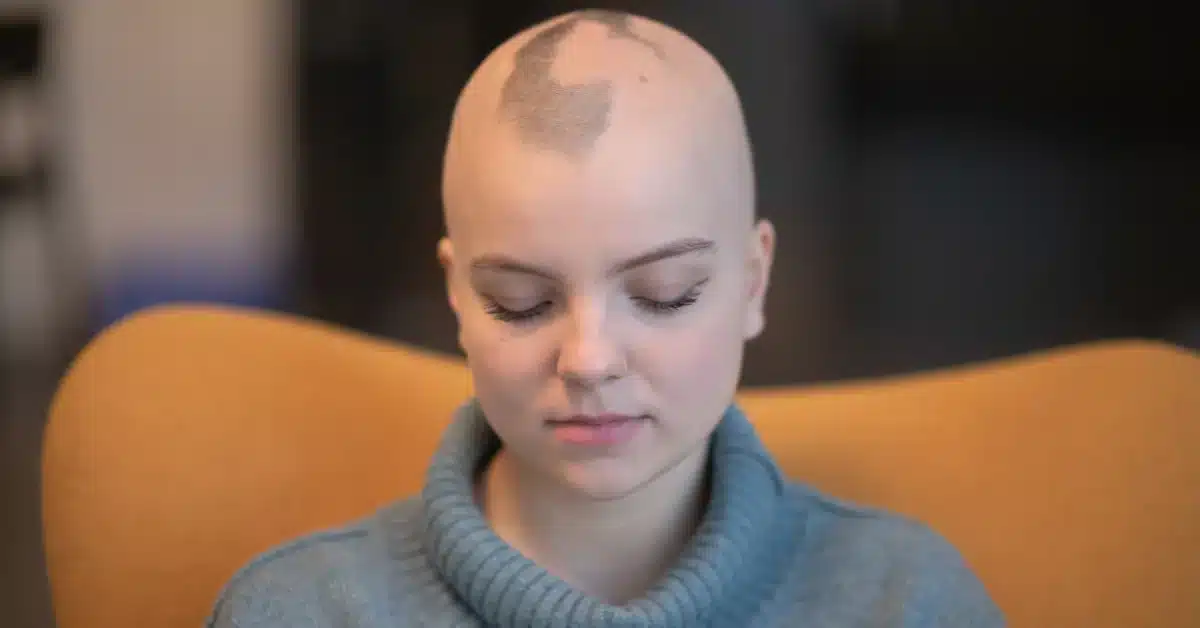Scarring Alopecia Treatment: How to Prevent Recurrence
Scarring Alopecia is also called “Cicatricial Alopecia.”
It is a combination of various hair loss disorders.
Nearly 3% of the global population is affected by Scarring Alopecia.
Scarring Alopecia treatment is possible if diagnosed from the beginning.
Medications like Minoxidil, and Doxycycline may help promote hair growth.
Consult your doctor to know about all possible treatment options available.
In the beginning, it seems like a small hairless patch and grows over time.
Due to gradual hair loss, symptoms remain unnoticed for a long haul.
Whereas in some cases, people face the problem of sudden hair loss.
This problem is also associated with severe pain, burning, and itching sensation.
The pattern of hair loss is different from Androgenic Alopecia and Alopecia Areata.
Diagnosis
The diagnosis of Scarring Alopecia depends on multiple factors.
It involves a clinical exam followed by a Biopsy.
Biopsy collects and examines a small sample of the affected tissue.
It provides information about the severity, location, and type of inflammation.
Scarring Alopecia Treatment will depend on the type of cells that caused the inflammation in your body.
Scarring Alopecia Treatment

As per American Hair Loss Association (AHLA), there are various forms of Scarring Alopecia.
Those categories as,
Neutrophil cells
As per National Organization for Rare Disorders (NORD), Scarring Alopecia treatment caused by Neutrophils is treated by eliminating the inflammation-causing microbes.
This can also be achieved with oral antibiotics.
Lymphocytic cells
Corticosteroids are used for Lymphocytic Scarring Alopecia treatments, says AHLA.
Corticosteroids are available both as topical creams and injections.
Your doctor may prescribe retinoids or antimalarial drugs if required, says Adam Mamelak, MD, dermatologist and founder of Sanova Dermatology in Austin, Texas, told WebMD Connect to Care.
Mixed cells
When several inflammatory cells cause hair loss, your healthcare provider may prescribe a combination of Retinoids, Corticosteroids, and antibiotics.
Medications for Scarring Alopecia

There are various medications available for Scarring Alopecia treatment.
A few of those are mentioned below,
Minoxidil
Minoxidil might help promote hair growth.
It can reverse hereditary hair loss and reactivate your inactive hair follicles.
Moreover, Minoxidil,
- Extends the follicular growth phase
- Increases the blood flow around the follicles
- Reverses the miniaturization of follicles
- Stimulates the follicle movement to the growth phase.
Consult your doctor before taking any medicine.
Doxycycline
Doxycycline is an antibiotic representing the tetracycline group.
It reduces the inflammation by inhibiting the proinflammatory mediators such as mitogen-activated protein kinase pathway and nitric oxide.
Doctors prescribe it for infections.
Being a broad-spectrum antibiotic, Doxycycline is quite versatile.
Doctors suggest the use of this antibiotic to treat
- Acne
- Syphilis
- Chlamydia
- Bacterial pneumonia
- Early-stage Lyme disease
Corticosteroids
Doctors prescribe oral corticosteroids for patients experiencing extensive hair loss.
These drugs can induce regrowth and slow hair loss.
Yet, long-term treatments may have serious side effects.
Corticosteroids are immune system suppressors.
These Scarring Alopecia treatment medications can counteract the effects of an autoimmune disease.
Thereby allowing the hair to grow freely.
Hair Transplant
Scarring Alopecia treatment with surgical options may restore the hair follicles, says Dr. Mamelak.
He even adds that hair transplantation is the only way to restore hair loss due to Scarring Alopecia.
How is hair transplantation done?
For hair transplantation, hair is taken from the non-affected scalp region.
Then it is transplanted to the area where hair loss has occurred.
However, the success of this procedure is accomplished once the disease has been inactive for twelve to twenty-four years.
Mamelak says, If the inflammation is still itching the skin, it can affect the newly transplanted follicles.
If your fair follicles are destroyed, then hair fall is a must.
Yet, you can prevent the hazard with early diagnosis and treatment.
In addition to this, 2% or 5% of Minoxidil foam or solution, five twice a day, may help regrow hair follicles.
It is also helpful to stimulate any remaining small and unscarred follicles.
With professional help, you can continue using hats, scarves, wigs, and hairpieces.
How can you take care of your hair?

Taking care of your hair is an integral part of daily hygiene.
If you are suffering from scarring Alopecia, it invites more follow-ups to prevent hair loss.
After consulting a Trichologist, you can even continue using your daily hair care products.
Trichologist is a specialist who studies diseases, their problems, and treatments related to hair and scalp.
Here are some hair care tips for those with Scarring Alopecia,
- Avoid using hair care products that may have harsh chemicals and can irritate the scalp
- Resist coming under direct sunlight for a longer duration
- Use a hat or scarf to protect your scalp, and apply a broad-spectrum sunscreen daily
- Doctors may recommend anti-medicated shampoos to reduce the inflammatory lesions
- Continue using the prescribed antibiotics
- You can also use wigs or hairpieces to camouflage the bald patches
Conclusion
The Scarring Alopecia treatment depends on the cause of the condition.
This condition might be controlled if treated at an early stage.
But, in severe cases hair transplant is the most effective option.
Scarring Alopecia is not a single disease but a combination of conditions.
These combinations consist of a group of hair loss disorders.
This is a type of permanent hair loss that destroys the hair follicles.
Any form of hair loss due to Scarring Alopecia is permanent and cannot be reversed.
However, this condition can be treated to help prevent further Scarring and hair loss.
Frequently Asked Questions
WowRx uses only high-quality sources while writing our articles. Please read our content information policy to know more about how we keep our content reliable and trustworthy.






